Features of pruning a columnar pear
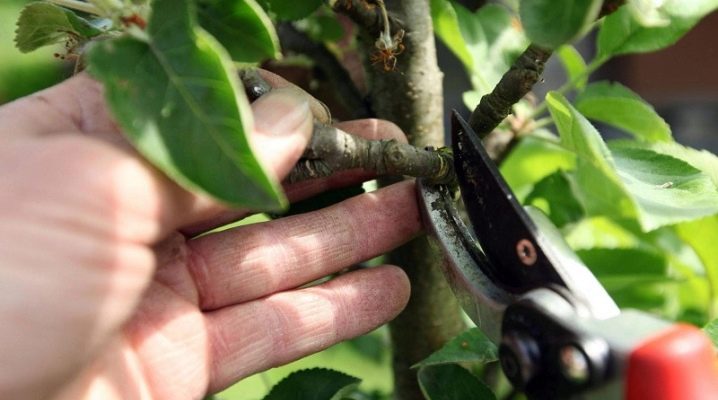
Columnar pear in recent years has become more and more interesting for gardeners. These trees are compact, look very curious, ideal for planting in small areas. Despite their small size, their branches also need to be pruned.
The pruning of a columnar pear differs slightly from the procedure that is practiced for other types of pear. This is associated with the features of the columnar species.
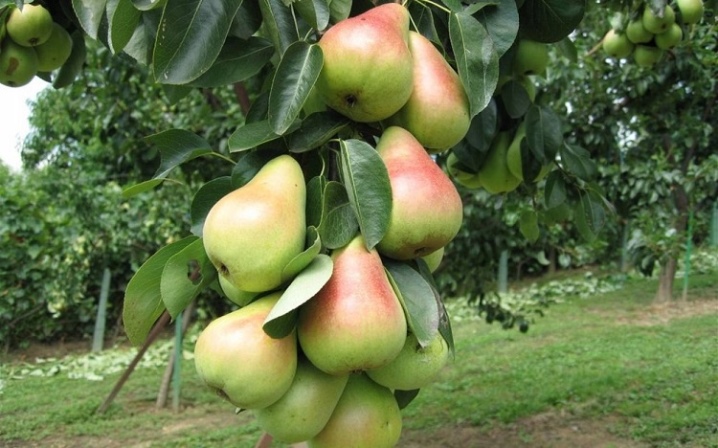
The need for a procedure
Columnar pears are dwarf varieties, they are undersized (no higher than 2.5 m), do not have branches, which is why incorrect pruning can provoke a drop in yield and in some episodes becomes a circumstance for the death of the tree.
Be that as it may, pruning a columnar pear according to a certain algorithm will make it possible:
- increase the level of productivity;
- open access to the sun and air masses for the entire crown of a pear, which will positively affect the quality characteristics of plant nutrition;
- make it easier to care for trees and fruits;
- prolong the process of plant fruit development;
- by pruning the columnar pear, develop a strong main trunk and skeletal branches capable of supporting the load of ripening fruit.
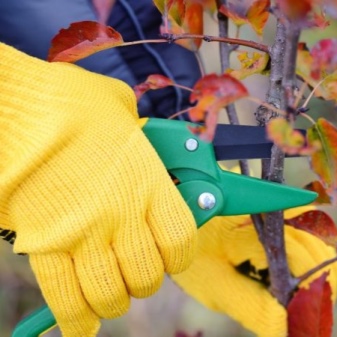
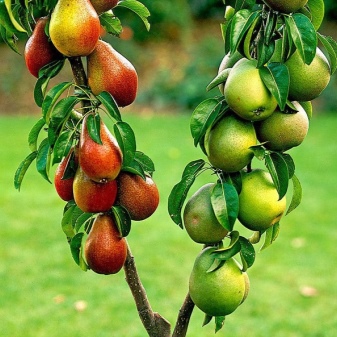
Timing
As for other fruit trees, it is advisable to prune a columnar pear in the spring or in the fall.... In the summer, this should not be done, since in parallel with the processes, it will be necessary to remove young leaves that provide the supply of nutrients.
Spring pruning
Spring is the most favorable for the procedure. Pruning is done in early spring, before the sap begins to move in the plants. Taking into account the region and climatic conditions, the branches are cut in March or April. Spring pruning is performed in order to:
- configure a normal crown;
- free the tree from unnecessary load;
- facilitate the care of the pear.
To perform the procedure correctly, the following recommendations should be observed:
- immediately after planting the seedling, all second-order shoots are cut off so that the main trunk can become stronger;
- cutting the trunk itself in the spring is contraindicated;
- after the pear takes root, 2-3 lateral shoots are cut from it every year;
- when the fruits begin to shrink, and their taste characteristics deteriorate, the lateral branches should be thinned.
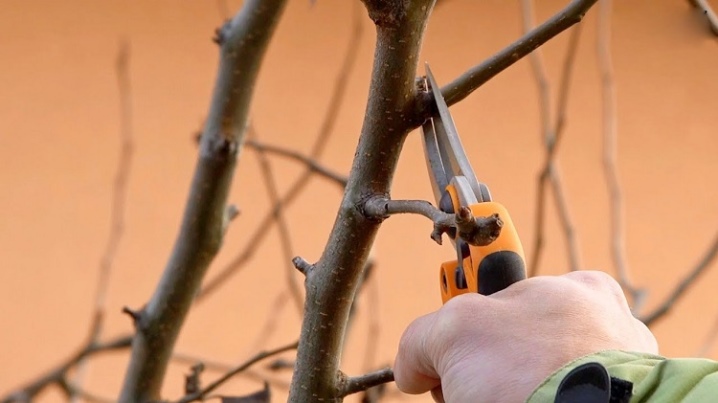
Autumn procedure
In autumn, the removal of shoots must be performed in September, before the arrival of frost. The operation is performed after the foliage has fallen off. If the tree was planted in the spring, then pruning in the fall of the same year is not done. The autumn event includes:
- pruning of shoots with damage, in which the movement of juice is disturbed;
- removing branches that do not bear fruit;
- removal of tips and lateral branches, to ensure new shoots next year.
Pruning in the fall is carried out in 3 stages.
- After 12 months. after landing - the main shoot is cut at an area of 50 cm above the ground. The cut should take place in the growth zone of the kidney, on the opposite side of the inoculation area.
- 2 g after disembarkation - the main shoot is pruned 25 cm above the last year's pruning site.
- 4 g after disembarkation - in the 4th year on the pear, as a rule, 6-8 branches are already developing. Of these, only 3-4 of the strongest processes should be left. The trunk of the tree is pruned at a height of 20 cm from the last cut.
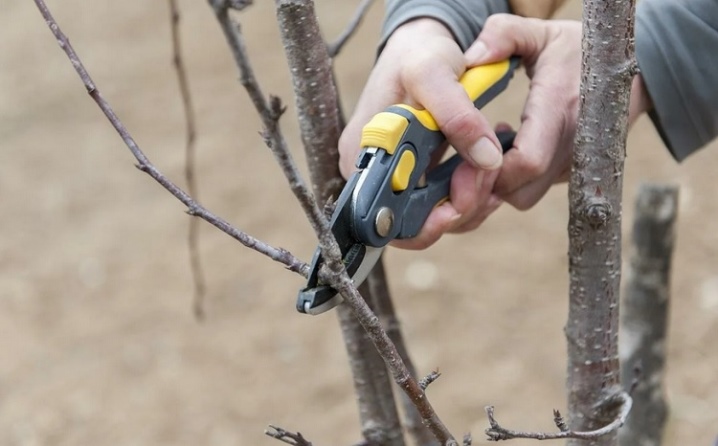
Views
There are several options for pruning a plant.
- Sanitary... The procedure is done to remove dried, damaged parts of the tree. This counteracts the spread of pathologies, parasites to healthy branches, pear leaves, to other plants. Sanitary pruning is carried out in the spring, in the summer - if necessary.
- Formative... This procedure has a great effect on the level of tree yield and life expectancy. The event takes place in the early years of the tree's growth.
- Thinning... The operation is performed to thin out the crown in order to improve aeration, the passage of the sun's rays to the fruit, and to give a decorative attractiveness to the plant. This pruning of excess branches is also done for the convenience and ease of caring for the tree, harvesting.
- Stimulating... The point is to shorten the branches. The exercise is done to restrain the growth of parts of the tree.
- Rejuvenating... Older trees have a decrease in fertility. Rejuvenating pruning makes it possible to raise the fruiting level of the pear.
The branches of the plant are pruned in several ways.
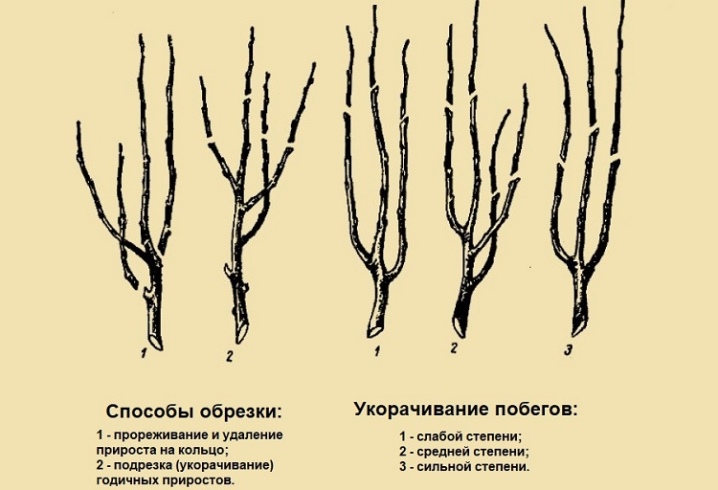
On the kidney
Young branches can only be pruned, changing the direction of their growth, tree crown. The pruning technique is very simple. Pruning branches in order to activate branching. In autumn, the buds are in a state of "sleep", they are barely noticeable, in this regard, it is easier for individual novice gardeners to perform formative pruning in the spring, when the buds swell.
When the crown is too thick, and there is a desire to expand it, the branches are cut "to the outer bud" (the shoot is cut after the bud, which is outside and goes from the middle). If you want to strengthen the center, the branches are removed after the bud, which is on the inside and facing the trunk. It is fundamentally wise to delete branches. Cutting too low can injure the kidney. If you cut a branch above 1.5 cm from the bud, the healing process will take a long time.
On a note! When pruning columnar pears, as a rule, they practice the method of pruning on the outer bud. This makes it possible to expand the crown, to divert branches from the main trunk, on which the fruit is set.
The cut on the inner bud leads to the formation of a dense crown, but this way the tree will look more picturesque.
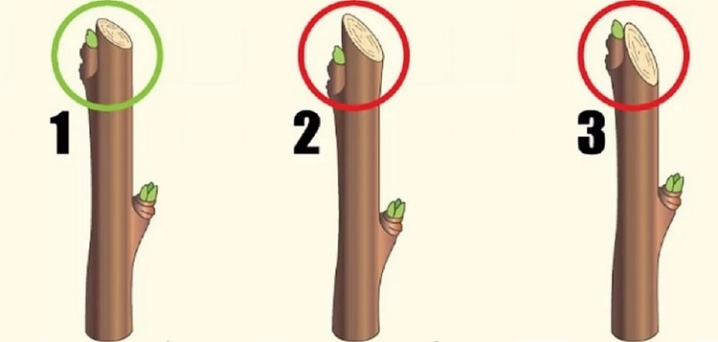
On the ring
This method is practiced if you want to completely remove the branch of the plant. For this, a cut is made at the beginning of the process. This place is chosen due to the fact that the damage here heals easily. The danger of penetration of parasites, pathogens into the tree is small.
The cut is done carefully exactly along the ring, not below, without deepening it into the trunk. Incorrect pruning will disrupt the movement of the juice, resulting in lower yields and poor fruit taste. The segment should not be left too large, as this will entail the passage of the bark, rotting of the plant. A hole can form in this area, through which pathogens of various anomalies can penetrate into the tree.
Pruning by this method is done when the crown of a columnar pear is formed. As a rule, cutting is done in 3 steps.
- Cut off one third of the appendix. A hacksaw is placed at the bottom of the branch so that it does not fall, peeling off the bark.
- Cut off another part of the branch... The hacksaw is placed on top.
- Carefully cut the appendage exactly along the ring. If after that there are protruding areas, they are cut off with a knife or garden shears.
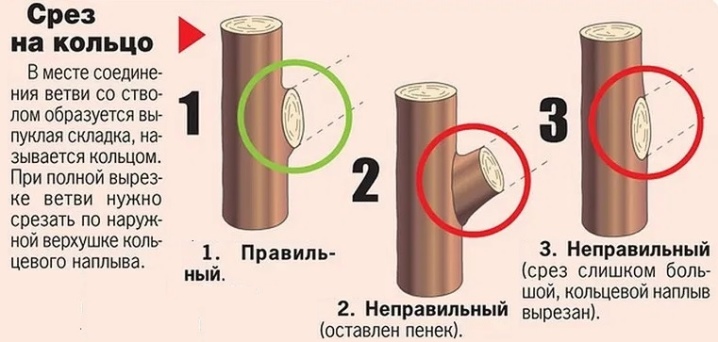
How to prune different pears?
The pear pruning scheme depends on the age of the tree, the purpose of the event.
Young
For a young tree, formative pruning is performed. The event makes it possible to correctly lay the main side branches. As a result, a gorgeous crown is formed with free movement of air currents, good access of the sun's rays to the fruits. Formative pruning frees the plant from secondary large-scale adjustments for 5-7 years.
The procedure is as follows.
- The first operation is performed 3 weeks after planting the tree in the spring. The event starts from the main trunk. The main trunk is shortened by 1/4, the shoots by two-thirds. If the plant was planted in the fall, work is performed in early March.
- The second pruning is done in the fall. For this, 5-6 branches are selected, which are proportionally located on the main trunk. Between them and the trunk, an angle of approximately 50 degrees should form. They are cut when the length of the branches has increased by more than 50 cm. The branches are made shorter by 1-2 mm. The cut is made over the outer kidney at a slight slope. The consequence of pruning will be as follows - the main trunk is 25 cm longer than the largest branch, the last bud of each of the rows of branches is at least 10 cm higher than the buds of the previous tier. The remaining processes are cut off by making a circular cut.
- The subsequent pruning is performed at the 3rd year of the tree's life.... Shoots are made shorter by 50% of the growth length. Pruning branches growing to the trunk, the main lateral branches at an angle of 90 and a slight angle, deep into the crown of the pear. They also get rid of processes that interfere with each other.
- At 4, 5 years of life of the tree, the crown of a pear is finally formed. To do this, make the trunk shorter, the main side branches, cut off unnecessary branches. As a result, a small neat tree appears with 3-4 rows of main lateral branches.
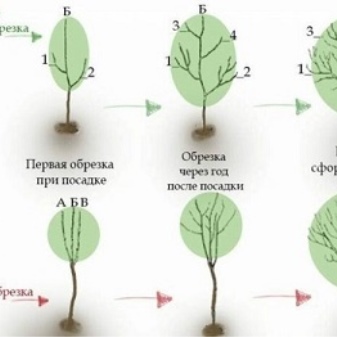
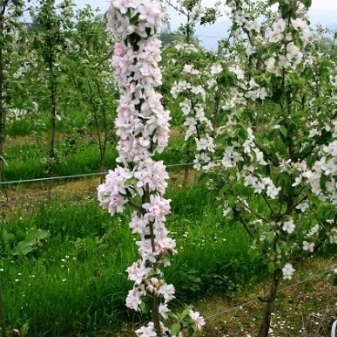
Adult
Pruning a 15-year-old tree is almost the same as for a young pear. The procedure is as follows.
- Trim two-thirds of the tops of the growth in length over the season.
- Remove dry affected areas of the plant, processes that interfere with each other, growing inside the crown. A cut is made into the ring.
- Remove tops branches growing at right angles to the trunk, main lateral branches.
- Pruning a 15-year-old tree is done to control the height of the pear, normalize aeration in the crown, and better access the sun's rays to fruits.
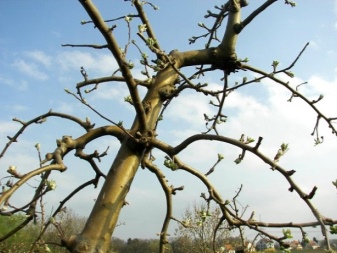
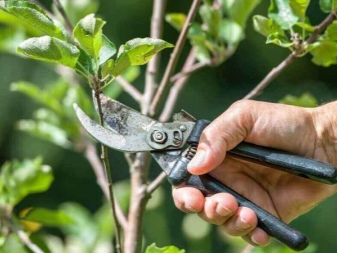
Old
A rejuvenating operation is performed on the old tree. Pruning is performed in the 10-12 year of the tree's existence. Rejuvenating pruning is performed in 2-3 seasons. The operation is performed in the spring, in the autumn.
Procedure.
- Reducing the length of the barrel, crowning.
- Pruning dry, wounded parts of the tree.
- Removal of sagging processes.
- Cutting tops, branches growing inside the crown.
Rejuvenating pruning increases the yield of the tree.
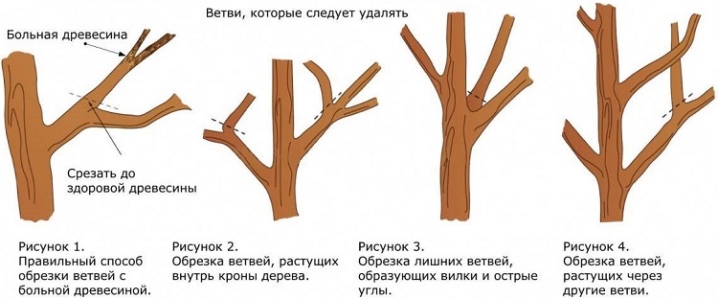
Tall
With the correct development of the crown, the columnar pear should not grow rapidly in height. When the plant steadily gains in height, the main trunk is constantly made shorter, only before the operation is carried out they find out what caused the growth.
Causes:
- too frequent fertilization, which leads to oversaturation of the soil with useful elements;
- frequent pruning after 3-4 buds;
- incorrect length reduction.
Only after correcting the cause of the unchanged growth of the pear do the proper actions take place. The pear is made shorter in height. First of all, one fourth of the annual increment, after 50% of the increment length, and so on. In parallel with this, the rows of branches are thinned, leaving 6 buds on each process.
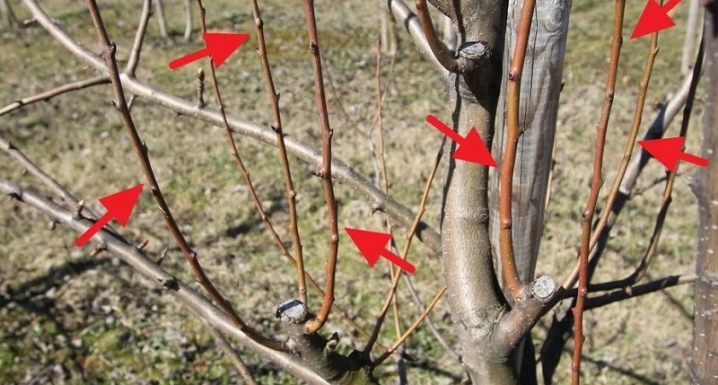
Follow-up care
The weakened tree after pruning must be protected and maintained by performing the following procedures:
- treat pears with substances that enhance immunity;
- spray with special agents to prevent damage from diseases and pests;
- whitewash with lime;
- additional watering during a drought;
- feed the tree with complex fertilizers.

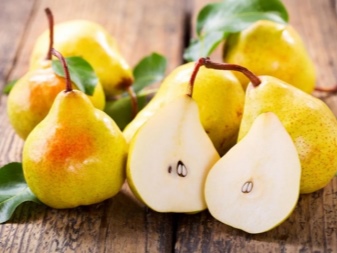








The comment was sent successfully.